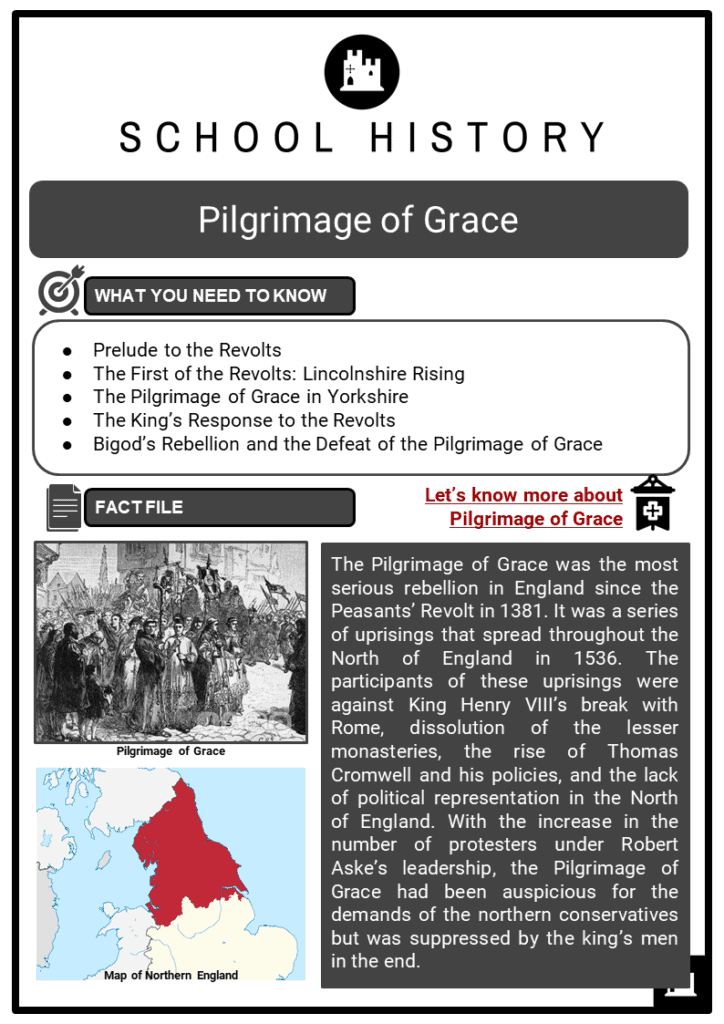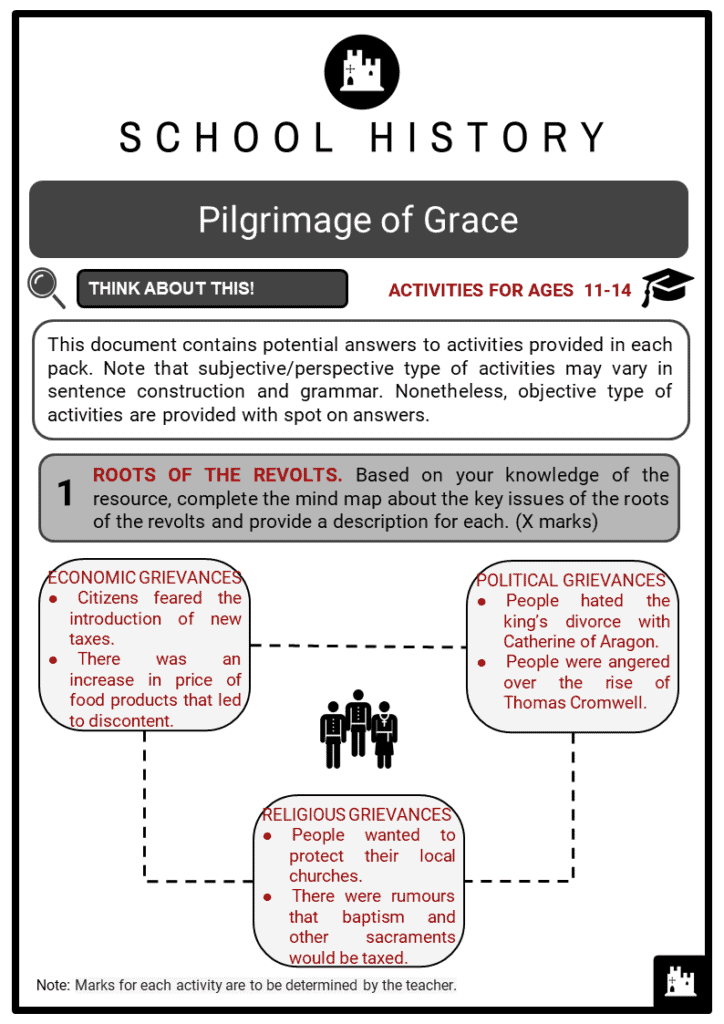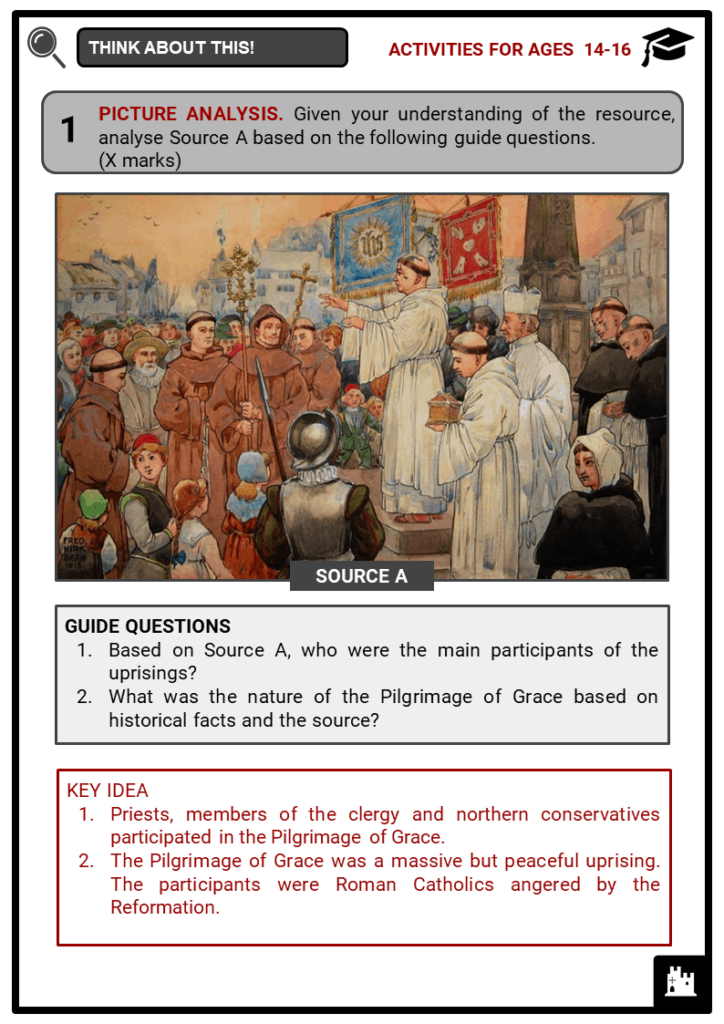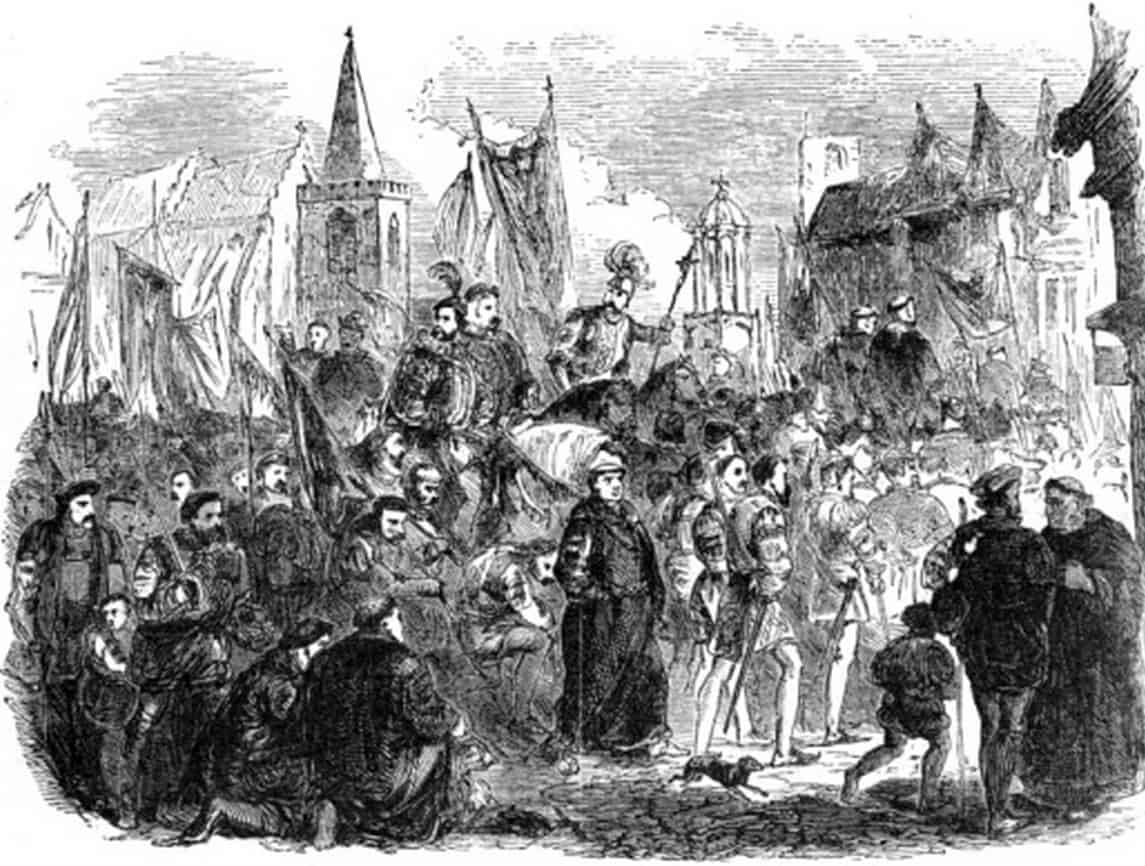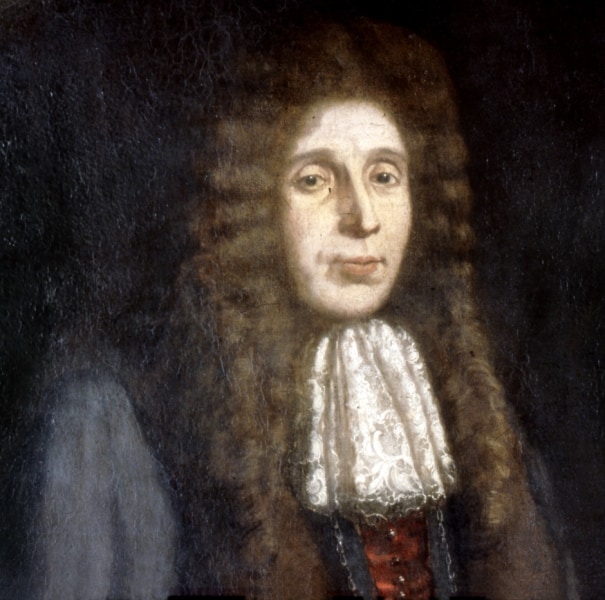Download Pilgrimage of Grace Worksheets
Do you want to save dozens of hours in time? Get your evenings and weekends back? Be able to teach Pilgrimage of Grace to your students?
Our worksheet bundle includes a fact file and printable worksheets and student activities. Perfect for both the classroom and homeschooling!
Table of Contents
Add a header to begin generating the table of contents
Summary
- Prelude to the Revolts
- The First of the Revolts: Lincolnshire Rising
- The Pilgrimage of Grace in Yorkshire
- The King’s Response to the Revolts
- Bigod’s Rebellion and the Defeat of the Pilgrimage of Grace
Key Facts And Information
Let’s know more about Pilgrimage of Grace
- The Pilgrimage of Grace was the most serious rebellion in England since the Peasants’ Revolt in 1381. It was a series of uprisings that spread throughout the North of England in 1536. The participants of these uprisings were against King Henry VIII’s break with Rome, dissolution of the lesser monasteries, the rise of Thomas Cromwell and his policies, and the lack of political representation in the North of England. With the increase in the number of protesters under Robert Aske’s leadership, the Pilgrimage of Grace had been auspicious for the demands of the northern conservatives but was suppressed by the king’s men in the end.
Prelude to the Revolts
- There had been early stirrings of unrest in the North of England due to the changes under the reign of King Henry VIII. These changes were part of the Reformation which gave way to Protestantism in England but these were not the sole reason of the uprisings.
KEY ISSUES OF THE ROOTS OF THE REVOLTS
- Economic Grievances: The nobility of the North was concerned about the new status of taxes. Citizens feared the introduction of new taxes on sheep. The harvest of 1535 also led to an increase in the price of food products, which contributed to general discontent.
- Political Grievances: Many people in the North of England hated the way Henry VIII dismissed Catherine of Aragon. Although the king’s new wife, Anne Boleyn, was unpopular, her execution in 1536 on charges of adultery, witchcraft and treason, did much to undermine the prestige of the monarchy and the personal reputation of the king. There was also anger over the rise of Thomas Cromwell.
- Religious Grievances: The local church was at the centre of community life in the North. Many ordinary peasants were afraid that their church plaques would be confiscated. There were also popular rumours that suggested that baptism could be taxed. The Ten Articles instituting a new order of prayer, published by the government in 1535, also suggested that the official doctrine followed the Lutheran reform. This went against the beliefs of most northern conservatives.
The First of the Revolts: Lincolnshire Rising
- Not until the evening prayer on 1 October 1536 did the early stirrings of unrest lead to an uprising. The Lincolnshire Rising began at St. James Church near Louth and found support in nearby Horncastle, Market Rasen, Caistor, and other cities close by.
- It started as an ordinary church procession that broke out into a mass protest march.
- Rumours, heard in a sermon by a cobbler, Nicholas Melton, had swept across the North of England and had angered the protesters.
- The protesters were loyal to the Catholic Church and were against the nascent Anglican Church commissioned by Henry VIII of England.
- They were not in favour of the dissolution of monasteries set up by Thomas Cromwell, and did not support the autonomy from Rome which the king claimed through the Act of Supremacy.
- Upset by the actions of the reformers who were acting on behalf of the king, the protesters demanded the suppression of the thirty-nine articles of religion, the arrest of the collection of taxes and the dissolution of most of the English convents, a purge of heretics from the government, and the restoration of the Statute of Uses.
- The small local nobility also joined the revolt: about 22,000 people marched to Lincoln and occupied the cathedral on 14 October, asking for the freedom to profess their Catholic faith.
- After threatening an intervention, Henry VIII sent men led by his brother-in-law Charles Brandon, 1st Duke of Suffolk.
- The protesters in Lincoln were dispersed and two of the chiefs of the revolt were taken and hanged near Tyburn.
- Many others who had joined the movement suffered the same fate in the following twelve days.
- The failed Lincolnshire Rising, however, had warmed the spirits and the Pilgrimage of Grace was ready to see the light.
The Pilgrimage of Grace in Yorkshire
- The movement burst forth on 13 October 1536 in Yorkshire, immediately after the failure of the Lincolnshire Rising, and at that time the phrase “Pilgrimage of Grace” was used.
- The participants of the movement called themselves ‘pilgrims’ and did not pose violent threats to London.
- They gathered under the banner, the Holy Wounds of Jesus Christ, and swore an oath of allegiance to the cause:
- “The oath of all men sworn unto them. Ye shall not enter unto this our Pilgrimage of Grace for the common wealth but only for the love ye bear to God’s faith and church militant and the maintenance thereof, the preservation of the king’s person, his issue, and the purifying of the nobility and to expulse all villein blood and evil councillors against the common wealth of the same. And that ye shall not enter our said pilgrimage for no particular profit to yourselves nor to do no displeasure to no private person but by counsel of the common wealth nor slay nor murder for no envy but in your hearts to put away all fear for the common wealth. And to take before you the cross of Christ and your heart’s faith to the restitution of his church and no suppression of heretic’s opinions by the holy contents of this book.”
- Robert Aske, a Yorkshire lawyer, was chosen to lead the insurgents. He was the cousin of Queen Jane Seymour.
- He was a pious man and opposed the religious reforms of King Henry VIII, in particular the dissolution of the monasteries.
- When the rebellion against the king broke out in Yorkshire, Aske was returning to Yorkshire from London.
- Initially, Aske had no role in the rebellion but the locals involved him and nominated him as their “captain”.
- Most of Yorkshire and parts of Northumberland, Durham, Cumberland and Westmorland were in revolt.
- In 1536, Aske led a group of 9,000 people who entered York and occupied the city.
- There, he made arrangements to exhort the monks and nuns to return to their homes.
- The number of protesters had grown in number and Aske had the support of Lord Darcy, Eustace Chapuys, and the imperial ambassador to England of Charles V, Holy Roman Emperor.
- The movement had become a sort of crusade with the involvement of both the nobles and the commoners.
THE PILGRIMS’ DEMANDS: 24 ARTICLES
- On 2 December 1536, Aske met with the rebel leaders and drafted a list of demands to the king at Pontefract Castle.
- "The first touching our faith":—To have the heresies of "Luther, Wyclif, Husse, Malangton, Elicampadus (sic), Bucerus, Confessa Germanie, Apolugia Malanctons, the works of Tyndall, of Barnys, of Marshall, Raskell, Seynt Germayne, and such other heresies of Anibaptist," destroyed.
- The supremacy of the Church touching "cura animarum" to be reserved to the See of Rome as before. The consecrations of the bishops to be from him, without any first fruits or pension to be paid to him, or else a reasonable pension for the outward defence of the Faith.
- That lady Mary may be made legitimate, and the former statute therein annulled for the danger of the title that might incur to the crown of Scotland: that to be by parliament.
- The suppressed abbeys to be restored to their houses, lands, and goods.
- To have the tenths and first fruits clearly discharged of the same, unless the clergy will grant a rentcharge in generality to the augmentation of the Crown.
- To have the Friars Observants restored to their houses.
- To have the heretics, bishops and temporal, and their sect, to have condign punishment by fire or such other, or else to try the quarrel with us and our part-takers in battle.
- Lord Cromwell, the Lord Chancellor, and Sir Ric. Riche to have condign punishment, as subverters of the good laws of the realm and maintainers and inventors of heretics.
- That the lands in Westmoreland, Cumberland, Kendall, Dent, Sedber, Fornes, and the abbey lands in Mashamshire, Kyrkbyshire, Notherdale, may be by tenant right, and the lord to have, at every change two years' rent for "gressom," according to the grant now made by the lords to the commons there. This to be done by Act of Parliament.
- The statutes of handguns and crossbows to be repealed, except in the King's forests or parks.
- That Dr. Lighe and Dr. Layton have condign punishment for their extortions from religious houses and other abominable acts.
- Reformation for the election of knights of the shire and burgesses, and for the use among the lords in the parliament house after their ancient custom.
- The statute for inclosures and intacks to be put in execution, and all inclosures and intacks since 4 Hen. VII., to be pulled down "except mountains, forests, and parks."
- To be discharged of the quinzine and taxes now granted by Act of Parliament.
- To have a parliament at Nottingham or York, and that shortly.
- The statute of the declaration of the crown by will to be repealed.
- Pardon by Act of Parliament for all recognisances, statutes and penalties new forfeited during the time of this commotion.
- The privileges and rights of the Church to be confirmed by Act of Parliament. Priests not to suffer by sword unless degraded. A man to be saved by his book. "Sanctuary to save a man for all causes in extreme need, and the Church for 40 days, and further according to the laws as they were used in the beginning of this King's days.
- The liberties of the Church to have their old customs as the county palatine at Durham, Beverlay, Rippon, St. Peter of York, and such other by Act of Parliament.
- To have the statute "That no man shall not will his lands," repealed.
- The statutes of treasons for words and such like made since 21 Hen. VIII., to be repealed.
- That the common laws may have place as was used in the beginning of the reign, and that no injunctions be granted unless the matter has been determined in Chancery.
- That men north of Trent summoned on subpoena appear at York, or by attorney, unless it be directed on pain of allegiance, or for like matters concerning the King.
- A remedy against escheators for finding false offices and extorting fees.
The King’s Response to the Revolts
- Henry VIII commanded an army of 8,000 men, led by Thomas Howard, Duke of Norfolk as a response to Aske’s success.
- As a backup, the king also sent a fleet of ten ships to the North of England. On 6 December 1536, Norfolk and Talbot opened negotiations with the insurgents at Doncaster, where as many as 40,000 men were gathered.
- Aske dealt with and gave the list of Pilgrims’ Demands to the royal delegates, and received the guarantee of a hearing and a safe passage to London.
- Arriving in London, he met King Henry VIII who promised him that he would examine his demands and guarantee him a safe passage provided that the revolt ceased.
- The king promised Aske through Norfolk that a parliament would be held in York a year later.
- Aske believed that the king would carry out this promise.
Bigod’s Rebellion and the Defeat of the Pilgrimage of Grace
- Unbeknown to Aske, a new demonstration took place in Cumberland and Westmorland under the direction of Sir Francis Bigod of Settrington, in the East Riding of Yorkshire in January 1537.
- This new uprising had broken the truce and led to the arrests of Aske, and several other leaders, such as Lords Darcy, Constable and Bigod.
- The leaders of the rebellion were convicted of treason and executed.
- Sir John Bigod, Lord Thomas Percy, Sir Henry Percy, Sir John Bulmer, Sir Stephen Hamilton, Sir Nicholas Tempest, Sir William Lumley, Sir Edward Neville, Sir Robert Constable, and the abbots of Barlings, Sawley, Fountains, and Jervaulx Abbey were executed in July 1537.
- Aske was indicted of high treason and was hanged with chains to the walls of York Castle as a warning to other “rebels”.
- Overall, 216 people were put to death and some of them were sentenced to be hanged, drawn and quartered.
- These were: lords and knights, half a dozen abbots, thirty-eight monks and sixteen priests.
- The death of the leaders allowed the Duke of Norfolk to suppress the rebellious movements.
AFTERMATH
- The Pilgrimage of Grace had failed for the most part:
- Reconciliation with the Roman Catholic Church did not happen until the reign of Mary I of England.
- The dissolution of the monasteries continued until it was fully accomplished in 1540.
- Many of the church’s properties were confiscated and distributed among the Crown and its supporters.
- Protestantism endured in England except during the reign of Mary I.
- The Council of the North was reformulated and the supporters of the crown were elected.
- Partial success was achieved by the uprisings:
- Taxation was effectively blocked for a certain period of time.
- Illegal land enclosures were reduced.
- Four of the seven sacraments were restored in the Bishop’s Book of 1537.
Image sources:
[1.] https://upload.wikimedia.org/wikipedia/commons/d/da/The_Pilgrimage_of_Grace_1536.jpg
[2.] https://upload.wikimedia.org/wikipedia/commons/7/76/P235-The_Pilgrimage_of_Grace.jpg
[3.] https://upload.wikimedia.org/wikipedia/commons/0/08/Robertaske.jpg

